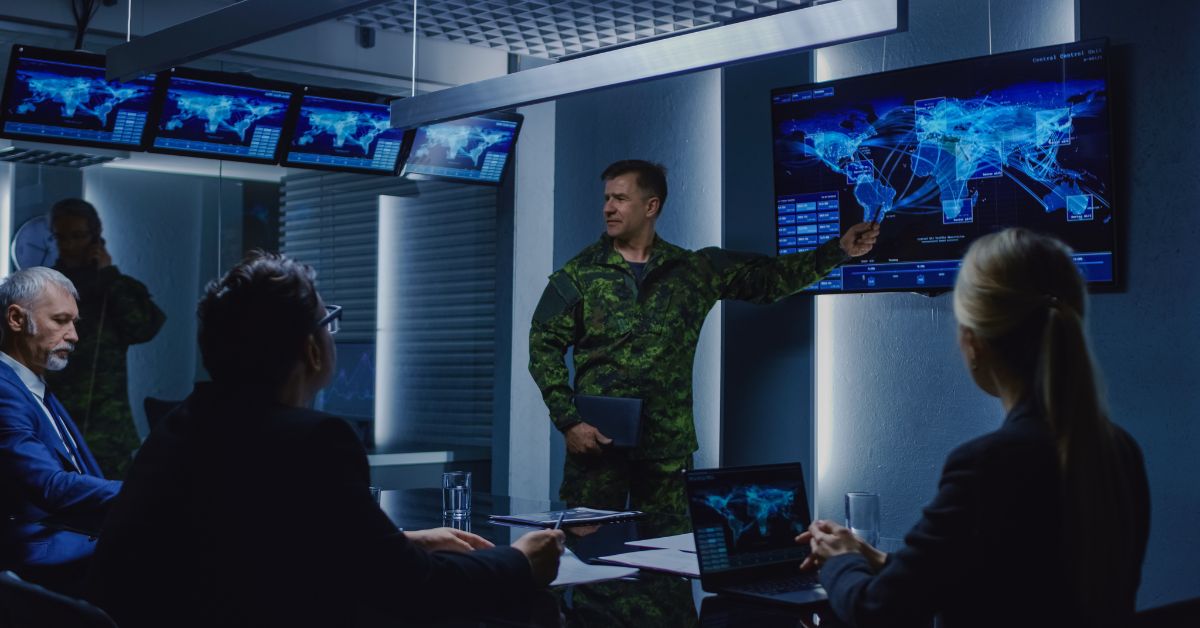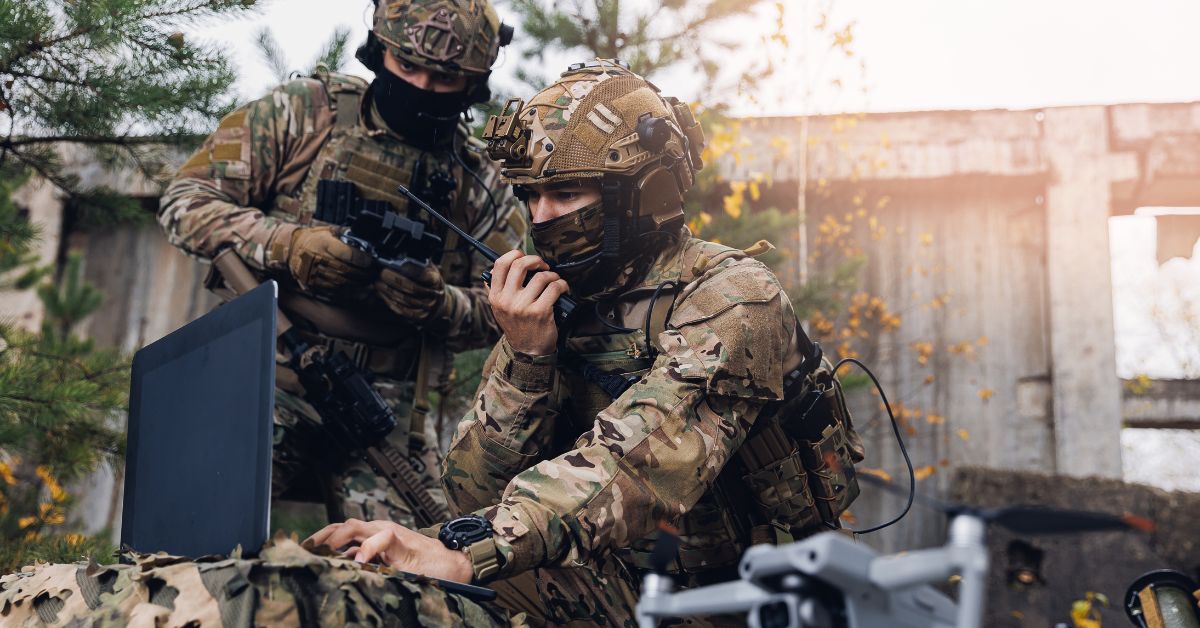
Photo by Matej Kastelic/ Shutterstock
2024 Army Summit Panel Highlight: Harnessing Technology for Force Readiness in Multi-Domain Environments
As evolving threats increase pressure on American forces, the Department of Defense has been integrating advanced technologies and sharpening its focus on multi-domain operations, or MDO, to guarantee readiness in complex and contested environments.
Aligned with these efforts, the Potomac Officers Club will host its 2024 Army Summit on June 13. One of the event’s key highlights will be a panel discussion on “Harnessing Technology for Force Readiness in Multi-domain Environments.”
About the 2024 Army Summit

The Potomac Officers Club’s 2024 Annual Army Summit gathers Army officials, government leaders and industry executives to discuss critical priorities and share cutting-edge strategies for addressing the most challenging issues in the domain.
The summit’s keynote speakers include the Honorable Doug Bush, the Army’s assistant secretary for acquisition, logistics and technology; Young Bang, the Army’s principal deputy assistant secretary for acquisition, logistics and technology; Michael Monteleone, director of the Army Futures Command’s assured positioning, navigation and timing/space cross functional team; and Leonel Garciga, chief information officer for the Army.
Check out some of the summit’s panel sessions below:
- Joint and Combined Integrated Air and Missile Defense in the Face of Evolving Threat Environments
- Software Development Driving Advancement for Army Missions
- How Do We Accelerate Speed of Development to Speed of Decision
- Harnessing Technology for Force Readiness in Multi-domain Environments
- Accepting Risk in Leveraging AI at the Pace of Need
- Emerging Approaches to Digital Data and Emerging Technology in the Army
Secure your spot now and join the conversation at the Hilton-McLean, 7920 Jones Branch Drive, McLean, VA.
Harnessing Technology for Force Readiness in Multi-domain Environments Panel
The U.S. military is launching an initiative to rebuild its readiness and modernize its forces to prepare for future adversaries. To support this initiative, Capgemini’s Lisa Mitnick, the Army’s Rodney Davis, the Army National Guard’s Bettye Dufour and the Military Operational Medicine Research Program’s Dr. Andrew Midzak will participate in the “Harnessing Technology for Force Readiness in Multi-domain Environments” panel at the 2024 Army Summit.
Learn more about these four participating speakers in this panel discussion.
Lisa Mitnick, Americas Portfolio Lead at Capgemini
An esteemed digital leader with over 20 years of experience, Lisa Mitnick specializes in launching and scaling new businesses across different sectors. She has a solid background in M&A, alliances and product development and sales.
In 2018, Mitnick earned a finalist spot for the 19th Annual Leadership Awards by Women in Technology. She was also recognized as a RealLIST 2021 Connector in DC for digital equity efforts.
Rodney Davis, Deputy Program Executive Officer for Aviation at the U.S. Army
Rodney Davis is the deputy program executive officer for aviation at the U.S. Army. In this role, he assists the program executive officer in overseeing various Army aviation endeavors.
Davis boasts an extensive career in Army aviation, having held several critical leadership positions in the service branch. Before assuming his current role, he was the acting deputy program executive officer for aviation.
Bettye Dufour, Chief of the Force Development Division for the Army National Guard
Bettye Dufour is the force development division chief for the Army National Guard at the National Guard Bureau. She oversees the equipment modernization efforts and collaborates with stakeholders to ensure soldiers have the necessary resources to fulfill their duties.
In the past, Dufour was deployed to Iraq, Kosovo and the Southwest Border and worked at the Pentagon and National Guard Readiness Center.
Dr. Andrew Midzak, Strategic Research Program Integrator for the Military Operational Medicine Research Program
Dr. Andrew Midzak is a critical figure in the Military Operational Medicine Research Program, known as MOMRP. As the program’s strategic research program integrator, he coordinates the alignment of primary research with advanced material development to promote service members’ health, readiness and performance.
Additionally, Midzak manages various research areas: physiological health and performance, psychological health, post-traumatic stress disorder and resilience, injury prevention and reduction and environmental health and protection.
What Is Force Readiness and Why Is It Important?

Force readiness is a critical military component. At its core, it demonstrates the military’s ability to mobilize and operate at any moment, regardless of the complexity or immediacy of the situation. It encompasses many factors, including training and equipment maintenance, personnel preparedness and logistical support.
Here are more reasons why force readiness is crucial for national security defense operations:
- To address and adapt to changes within the defense industry
- To integrate and leverage new technologies
- To mitigate inefficiencies within military operations
- To ensure logistical failures do not compromise military missions
- To guarantee the implementation of efficient military practices
Critical Tools and Technologies Used by the U.S. Army for Force Readiness

M270 Multiple Launch Rocket System
As warfare evolves, the Army continually pushes the boundaries of technology to prepare for combat. One notable advancement is the M270 Multiple Launch Rocket System (MLRS).
In May 2024, the Army awarded Lockheed Martin a $451 million contract to recapitalize the M270 systems. The recapitalization includes overhauling the launchers with new engines, improving armored cabs and deploying the latest common fire control system.
These upgrades guarantee compatibility with current and future munitions in the MLRS family.
LOCUST Laser Weapon System
The LOCUST Laser Weapon System combines end-to-end engineering elegance with advanced AI, allowing a directed energy “kill chain” to track, identify and engage various targets with a high-energy laser.
BlueHalo, the firm behind the LOCUST Laser Weapon System, secured a $95.4 million contract for advanced directed energy prototype development under the U.S. Army Space and Missile Defense Command’s laser technology research development and optimization program. The contract focuses on improving the system’s performance, durability and effectiveness against small unmanned aerial systems.
Autonomous Vehicle Technology
The integration of autonomous vehicles is radically transforming military operations. These vehicles boost troops’ readiness and enhance the units’ operational capabilities.
The Army, in collaboration with the Defense Innovation Unit, is working on the Ground Vehicle Autonomous Pathways (GVAP) project to develop autonomous software and processes for uncrewed vehicle technology.
GVAP focuses on creating software that integrates data from multiple sensors to enable guide navigation and remote control of unmanned ground vehicles. Additionally, the project establishes a technical pipeline for the rapid development, testing, evaluation and deployment of autonomous features upon their commercial availability.

Category: Articles




